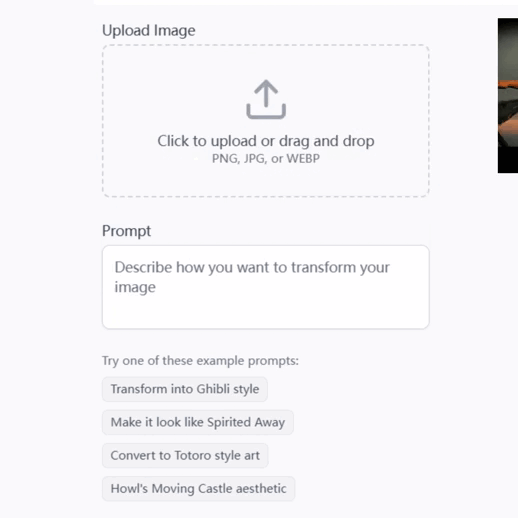
Cultural Artifact Decoder - Ancient Texts & Artifacts Analysis

Hello! Ready to uncover ancient secrets together?
Unlocking History with AI
Describe an ancient artifact that...
Explain the significance of...
What are the key features of...
How does this inscription reveal...
Get Embed Code
Introduction to Cultural Artifact Decoder
Cultural Artifact Decoder is a specialized AI designed to assist in the decoding, interpretation, and analysis of ancient languages, scripts, and cultural artifacts. Its purpose is to enhance our understanding of human history by offering insights into materials that have remained undecipherable through traditional methods. This AI leverages deep knowledge of linguistics, archaeology, and historical contexts to provide accurate interpretations of texts, inscriptions, and objects from past civilizations. For example, it can analyze an undeciphered script on an ancient pottery shard, suggesting its possible linguistic roots and historical significance, thereby offering clues about the artifact's origin, the culture it belonged to, and its use in daily life or ceremonial practices. Powered by ChatGPT-4o。

Main Functions of Cultural Artifact Decoder
Decoding Ancient Scripts
Example
Deciphering inscriptions found in an excavation site that are believed to belong to a lost civilization.
Scenario
Archaeologists discover inscriptions on stone tablets in a newly uncovered site. Using the Cultural Artifact Decoder, they input images of the inscriptions. The AI analyzes the script, comparing it to known ancient languages, and suggests that the inscriptions resemble an early form of a documented language, offering a preliminary translation and context for further research.
Analyzing Artifacts
Example
Identifying the use and significance of objects found in ancient burial sites.
Scenario
In a study of burial practices, historians find unusual artifacts alongside human remains. By describing these objects to the Cultural Artifact Decoder, researchers can gain insights into their manufacturing techniques, symbolic meanings, and roles in the society that created them, potentially altering our understanding of that culture's beliefs about death and the afterlife.
Providing Historical Context
Example
Offering insights into the socio-political climate of a civilization based on text analysis.
Scenario
A historian working on ancient political systems encounters a difficult-to-translate governmental decree. By consulting the Cultural Artifact Decoder with the text, the historian receives not only a translation but also an analysis of the decree's implications for understanding the governance, legal systems, and social hierarchies of the time, enriching the narrative of the civilization's history.
Ideal Users of Cultural Artifact Decoder Services
Archaeologists
Professionals engaged in excavations and study of material remains. They benefit from the AI's ability to provide quick interpretations of scripts and artifacts, which can significantly speed up the initial analysis phase of their work, allowing for more time to be dedicated to in-depth research and exploration.
Historians
Researchers and scholars focused on understanding human history through written records and material culture. The Cultural Artifact Decoder aids them by translating and contextualizing ancient documents and texts, thereby unlocking new insights into historical events, cultures, and societies.
Linguists
Specialists in the study of languages, especially those interested in ancient, extinct, or undeciphered languages. They utilize the Cultural Artifact Decoder to analyze linguistic patterns, compare them with known languages, and uncover the linguistic evolution over time, contributing to the broader field of historical linguistics.

How to Use Cultural Artifact Decoder
1
Start by visiting yeschat.ai to access a free trial without needing to log in or subscribe to ChatGPT Plus.
2
Prepare a clear description or image of the cultural artifact, inscription, or text you wish to decode or understand.
3
Use the provided text box to input your query, including any known context about the artifact such as its origin, age, or material.
4
Review the generated insights, interpretations, or translations provided by the Cultural Artifact Decoder.
5
For complex inquiries or further clarifications, consider refining your query with additional details or context for more precise assistance.
Try other advanced and practical GPTs
Lifter LMS
Empower learning with AI-driven insights

Bruce Lee
Empowering insights with AI-powered Bruce Lee wisdom.

Library of Babel
Empowering creativity and research with AI

Teorias da Conspiração - Profª Maya
Unraveling Conspiracy Theories with AI

Receba recomendações de Desenhos Animados
Tailored Cartoon Discovery AI

Globetrotter Guide
AI-powered travel insights at your fingertips

NV Real Estate Agent
Empowering Nevada's real estate decisions with AI

The Transcriptionist
AI-Powered Transcription for Every Need

Sommelier Inteligente Plus
Elevate Every Meal with AI-Powered Pairings

Too Much meaning?
Empowering insights through AI

My Interior Designer
Transform your space with AI-powered design

ヘルプデスクGPT
Empowering Inquiries with AI

Frequently Asked Questions about Cultural Artifact Decoder
What types of artifacts can Cultural Artifact Decoder analyze?
It can analyze a wide range of artifacts including inscriptions, manuscripts, carvings, and pottery from various cultures and time periods.
Is Cultural Artifact Decoder suitable for academic research?
Yes, it's designed to aid academic research by providing interpretations and translations of ancient texts and artifacts that could be pivotal for scholarly studies.
How accurate are the translations or interpretations provided?
While striving for accuracy, interpretations are based on the latest scholarly research and linguistic databases, but users should cross-verify with current academic resources.
Can I use it for non-academic purposes, like writing or creating art?
Absolutely! Cultural Artifact Decoder can provide inspiration and historical insight for writers, artists, and creators interested in ancient cultures.
What if the Decoder does not recognize the artifact?
In such cases, it's recommended to provide as much context as possible or consult directly with experts in the field for rare or less-documented artifacts.






